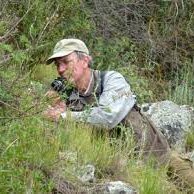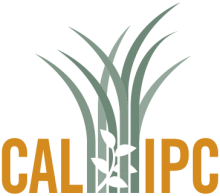Climate Matching Map
| Attachment | Size |
|---|---|
| climatematch-senecio_angulatus-california-20250207.pdf (1.16 MB) | 1.16 MB |
1. Question 1
Altough not yet declared invasive, the plant is targeted by the Oregon Department of Agriculture for early detection and fast response if it were to escape from cultivation. (USDA APHIS)
On the Costa Brava in Spain, it was one of the five most recorded species, where it was found in large assemblage, usually close to human residence, invading and colonizing the clifftops, roadsides and the proximate scrubland, including the undergrowth, replacing native flora species such as Pistacia lentiscus. It was introduced to Catalonia in the 1970s as a groundcover plant in home gardens, before escaping. It is one of the most common alien species present on the Catalan coast. (MedCliffs Life)
2. Question 2
The plant is targeted by the Oregon Department of Agriculture for early detection and fast response if it were to escape from cultivation. (USDA APHIS)
On the Costa Brava in Spain, a climate matching area, it was one of the five most recorded species, where it was found in large assemblage and is one of the most common alien species present on the Catalan coast, a climate matching area. (MedCliffs Life)
3. Question 3
Although not yet declared as invasive, the plant was evaluated as "High risk" by the Oregon Department of Agriculture for early detection and fast response if it were to escape from cultivation (USDA APHIS).
4. Question 4
Additionally, the plant was evaluated as "High risk" by the Oregon Department of Agriculture (also with a California Climate match) for early detection and fast response if it were to escape from cultivation (USDA APHIS).
5. Question 5
Cal-IPC has declared Senecio elegans, Senecio glomeratus, Senecio jacobaea, and Senecio linearifolius as an invasive species in California (Cal-IPC).
GISD reports Senecio inaequidens, squalidus and viscosus as addiional examples of invasive Senecios in climate matched areas of the world (GSID).
The closely related Delairea odorata (formerly Senecio makanoides), and Jacobaea vulgaris are declared invasive species in California (Cal-IPC).
6. Question 6
However, because this tool is a binary yes/no score of occurrance in polygon areas and not a quanitative obsevation count it is highly likely that a more fine scale analysis would place a good majority of the individual observation points within the areas of climate match. I feel confident in a YES answer to this question, yet purely from the close area count I am scoring a Medium confidence (Cal-IPC Climate Match Tool).
7. Question 7
Because it forms dense vine tangles and mats (Bergin, 2006; USDA, APHIS, 2013), Senecio angulatus changes community structure, alters species composition (Newton, 1996; Weber, 2011; USDA, APHIS, 2013), reduces regeneration of native species (Williams, 2007), and is likely to threaten rare species.
8. Question 8
9. Question 9
Senecio species contain hepatotoxic pyrrolizidine alkaloids (PAs), which if grazed can induce irreversible liver damage. Senecio species in general are known to be toxic to livestock and humans (Burrows and Tyrl, 2001).
Senecio angulatus is toxic to both humans and pets according to The American Society for the Prevention of Cruelty to Animals. If ingested, it can cause vomiting, diarrhea and abdominal pains (Homeplantsguide, altough this is a secondary source with no reference citation and marginally validated).
In South Africa, Senecio angustifolius contaminates Rooibos tea (Aspalathus linearis (Burm.f.) R.Dahlgren). Unfortunately, S. angustifolius has a similar growth habit and flower color as A. linearis, making it difficult to eliminate from Rooibos plantations. As the invading species grows among the Rooibos plants, it secretes pyrrolizidine alkaloids into the rhizosphere, where they are enter the root system of A. linearis and accumulate in the tea leaves. (VanWyk, e al)
A 1962 paper documenting toxic alkaloids within the plant tissues further supports the conclusion of its toxicity. (Porter, 1962)
10. Question 10
Not specifically discussing impacts to animal movement, but perhaps inferring it are Newton comments: "Senecio angulatus changes community structure, alters species composition" (Newton, 1996; Weber, 2003; USDA, APHIS, 2013). And Williams states "reduces regeneration of native species and is likely to threaten rare species" (Williams, 2007).
Numerous in-situ photo images show dense mats and vegetation tangles, strongly inferring "blocking or slowing movement of animals, livestock or humans" (iNat, Calflora).
Florabase is even clearer, stating "Completely smothers ground-flora vegetation and smaller shrubs". (Florabase)
11. Question 11
This species spreads through seeds(?) and stem fragments that can easily root (FloraBase, 2013; Hussey et al., 2007; Williams, 2007). Yard waste is believed to be a significant pathway for its spread, because it can establish from plant fragments (Hussey et al., 2007; Williams, 2007).
This species reproduces by seed(?) and also via stem segments. Its seed are dispersed by wind and animals, while its seeds and stem segments can also be spread in dumped garden waste (CABI).
12. Question 12
This species spreads through seeds(?) and stem fragments that can easily root (FloraBase, 2013; Hussey et al., 2007; Williams, 2007). Yard waste is believed to be a significant pathway for its spread, because it can establish from plant fragments (Hussey et al., 2007; Williams, 2007).
This species reproduces by seed(?) and also via stem segments. Its seed are dispersed by wind and animals, while its seeds and stem segments can also be spread in dumped garden waste. (CABI)
13. Question 13
CABI reports "A study in Wellington (New Zealand) found that S. angulatus is self-incompatible and no seeds were produced in the study site. However, artificial hand-pollination experiments suggest that a lack of pollinators is not the reason for the limited seed production. (CABI)
"A vegetative experiment showed that cuttings of various ages and lengths had the ability to establish indicating that the predominant mode of dispersal of S. angulatus in the Wellington region is vegetative reproduction" (Scott, 2001). The same source continues "the predominant mode of dispersal of S. angulatus and D. odorata in the Wellington region is considered to be vegetative reproduction"(Scott, 2001).
It would be reasonable speculation for non-viable seed in area away from its native range to be the result of self incompatability. This self incompatability could in-turn be due to a lack of genetic diversity in an alien population. However, over time, and with additional propagule recruitment, this non-viable seed trait could disappear.
I am giving a "Yes" answer here, but only a medium confidence given some lack of published reseach and uncertainties about seed viability in different geographic areas.
14. Question 14
Phillipa Scott, 2001 says "S. angulatus produces large numbers of seeds", but does not provide a count. CABI states "the predominant mode of dispersal of S. angulatus and D. odorata in the Wellington region is considered to be vegetative reproduction". (CABI)
Finally Scott, 2001 continues saying "the presence of a sporophytic self-incompatibility mechanism. This supports the hypothesis that populations of S. angulatus and S. mikanioides [Delairea odorata] are both comprised of a single genotype, or at least are fixed for a single S allele so that seed is unable to be produced." (Scott, 2001)
I am giving a "No" answer here, and a high confidence given the unlikely probability of >1,000 viable seeds.
15. Question 15
Phillipa Scott, 2001 says "S. angulatus produces large numbers of seeds", but does not provide a count. CABI further says "the predominant mode of dispersal of S. angulatus and D. odorata in the Wellington region is considered to be vegetative reproduction". (CABI)
Finally Scott says "the presence of a sporophytic self-incompatibility mechanism. This supports the hypothesis that populations of S. angulatus and S. mikanioides [Delairea odorata] are both comprised of a single genotype, or at least are fixed for a single S allele so that seed is unable to be produced." (Scott, 2001)
I am giving a "No" answer here, and a high confidence, because >25% germination seems quite unlikely given the literature.
16. Question 16
The New Zealand Plant Conservation Network states "Seed is believed to be non-viable. Seeds are spread by wind" meaning that reproduction, in New Zealand (a non-native location) would be purely vegetative (New Zealand Plant Conservation Network).
I am giving a "Yes" answer, due to published statements about seed germination in the plants native range. But I am only offering a medium confidence given some other documentation about non-viable seed in most/all alien locations.
17. Question 17
The New Zealand Plant Conservation Network reports flowering during March, April, May, June, July, and August (New Zealand Network).
There is doubt about seed viability in the species, but this apparently is not a consideration of the question.
18. Question 18
19. Question 19
Where the plant does produce viable seed it is wind dispersed, although the distance of this dispersal is less certain:
Produces "fluffy seeds" that are dispersed a long way from the parent plant (WMC, 2013). Dispersed by wind (FloraBase, 2013; Weber, 2003; Williams and Hayes, 2007).
"Achenes terete, with hairs on ribs" (Flora of New Zealand, 2013). "Produces an achene (i.e., a fruit that tightly envelopes a seed) that is 2.2 Ã 0.5 mm with a pappus" (bristles or feather-like hairs) (Newton, 1996).
As noted elsewere, seeds are not necessarily viable in CA, amd not the likely or preferred method of dispersal and propagation for the species in CA.
I cannot locate any specific documentation about water dispersal of stem fragments. But because the plant grows commonly on stream banks and reproduces easily from stem fragments, dispersal from detached stem fragments would seem very likely along water courses.
One source indicates it is dispersed by water (FloraBase, 2013), but it provides no specific data or references. Because seeds of this species don't appear to be specifically adapted for water dispersal, seed dispersal by water is inconclusive and unknown.
I am answering YES because of the documentation of seed dispersal by wind and the high likelihood of propagation from vegetative segments transported in stream water.
20. Question 20
Given the propensity of the species to root readily from stem fragments, dispersal via agriculture, equipment, and vehicles is almost certain. However, without a specific reference I am scoring only Medium confidence.
Evaluation Notes
This taxon scored highly and would appear to be a strong candidate for invasiveness in California. Published documentation is fairly thorough and complete.
Seed viability in California remains somewhat uncertain.







